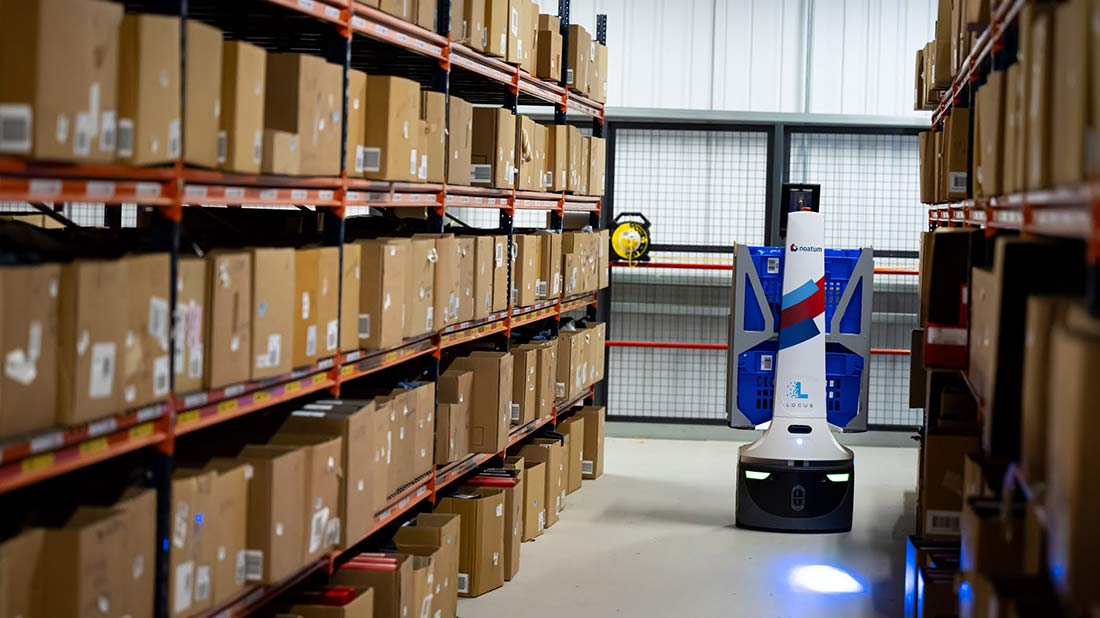DCs are changing to enhance customer experience

Since the start of 2023, some of the largest eCommerce brands, including Amazon, ASOS and BooHoo have implemented a wave of warehouse closures, as a drop in sales, rising inflation and increasing overheads make some spaces cost-ineffective and some older larger spaces obsolete, with online retailers seeking better located, fit-for-purpose facilities and the best handling technologies.
Increasingly, for fulfilment executives the priority is purpose-built, automated facilities in well-connected locations, to improve customer experience by extending order cut-off for next-day delivery and processing returns faster.
Omnichannel retailers face different challenges to pureplay operators and need to maintain the capacity to cope with growth in stores alongside online sales, which may mean the rapid acceleration of handling capability with conveyor systems or more efficient racking to increase replenishment capacity.
Advanced warehouse management systems (WMS) and tracking technology, monitor and record every stock movement, to analyse and improve processes and speed, which may allow deliveries into the DC to be picked up directly on arrival, reducing delivery times to customers and store estate.
Since the COVID lockdowns of 2020-2021 fuelled the online sales boom, shoppers have been returning to physical stores, with shopping footfall increasing 42% in 2022, compared to the previous year.
The lockdown-driven surge in eCommerce intensified demand for warehouse space, with Office for National Statistics (ONS) recording a sharp rise in new warehouse construction projects in 2021, the highest level since 1985.
The challenge for warehouse planners is to make operations so efficient that space is superfluous, and particularly in identifying where automation can add the most value.
Autonomous mobile robots (AMRs) can perform heavy and light-duty tasks, which means they can can pivot between processes, picking and consolidating orders in any available space. Large DC’s that previously housed distinct functions are now multifunctional, requiring less space and allowing operational warehouse space to be far more dense, to maximise storage.
Despite more efficient use of space many occupiers are reluctant to release excess warehouses because there is a shortage of them, with demand for warehousing 46% higher than the net delivery of new space over the last decade.
Omnichannel fulfilment requires more complex processes, which places increased demand on traditional distribution centres, but AMRs can cope with picking that differs by channel.
In a traditional DC, omnichannel stock is physically segmented according to channels, but the use of AMRs creates a ‘virtual’ single physical pool with systemic control over ‘virtual’ segmentation to optimise the DC process and space required.
Consumer expectations around delivery speeds have also driven change – forcing retailers to adopt fulfilment models closer to customers. One way to meet expectations is by converting spare store space into mini-warehouses from which to ship goods.
Greater flexibility, through the effective use of technology, rather than greater size, will be a critical success factor for warehousing in the future.
Technology offers the potential to offset increasing utilities, rates and labour costs, by lowering the cost to serve, with collaborative AMR robots deployed in our London Medway eCommerce facility, travelling automatically from one location to another carrying items, reducing employees’ walk time and helping them pick items more efficiently.
Noatum Logistics is currently implementing a £multi-million investment and intensive fit-out programme to create our latest state-of-the-art eCommerce fulfilment centre in Biggleswade, with 530,000 sq. ft of optimised space, with the latest handling automation and robotic technology.

